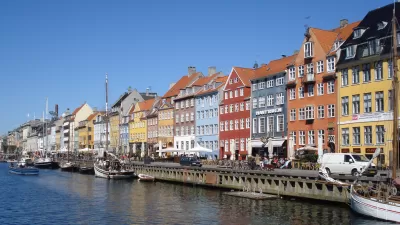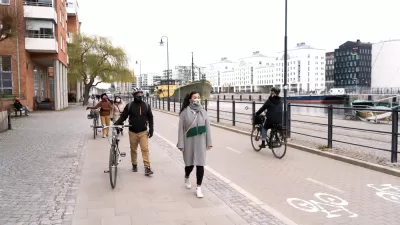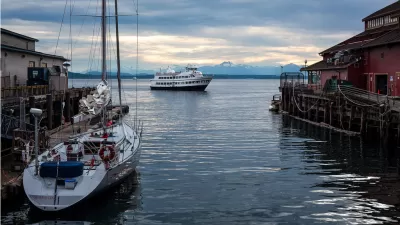Copenhagen is often cited as the world’s most livable city—a city characterized by bicycles and shared open spaces. But the road to get there has required compromise among politicians and an active and engaged community.

Copenhagen has been called the world’s greenest and most livable city, and it has the added benefit of being capital of the world’s happiest country, Denmark. Writing in Next City, Feargus O'Sullivan finds that the ascendancy of Copenhagen hasn't been as smooth as many believe and additional challenges on the horizon, including a dearth of affordable housing remain a problem for the city.
Right now, for example, Copenhagen is considering a new harbor tunnel that, if built, could end up flooding the city center with cars. Growth in housing demand is galloping ahead of home building, causing higher-than-ever housing costs. Some key housing schemes built so far have made some missteps and predominantly targeted the already well-served rich.…
The urbanism movement’s model city is not immune to the challenges of growth, climate change and increasing economic disparity.
Where Copenhagen has succeeded is in the willingness of its leaders to seek compromise, an outcome of the country's multi-party system. Proposals won't survive unless, as O’Sullivan writes, "their arguments aren’t backed up by data." Risk taking and engagement inside and outside of government is also cited as one of the city's strengths. Progressive activists have rallied to save open space and force better bicycle infrastructure, while one city engineer worked to reduce parking in the city through "stealth urbanism." O'Sullivan provides this interesting anecdote from Copenhagen architect Jan Gehl.
“For many years, Copenhagen had an excellent city engineer who said ‘if you can’t park, you don’t drive.’ Then he said ‘I’ll take 2 percent of the parking out of downtown every year, and I won’t tell anybody so nobody will notice.’ So every year, he reduced the amount of parking space and put in more tables, more chairs,” Gehl recalled at a forum hosted by The Atlantic in October. “The place became nicer and nicer, and people changed their habits, taking their bikes or the bus or metro. Over a period of time, the pattern of behavior has changed. You could call it stealth urbanism.”
FULL STORY: Even Copenhagen Makes Mistakes

Study: Maui’s Plan to Convert Vacation Rentals to Long-Term Housing Could Cause Nearly $1 Billion Economic Loss
The plan would reduce visitor accommodation by 25,% resulting in 1,900 jobs lost.

North Texas Transit Leaders Tout Benefits of TOD for Growing Region
At a summit focused on transit-oriented development, policymakers discussed how North Texas’ expanded light rail system can serve as a tool for economic growth.

Why Should We Subsidize Public Transportation?
Many public transit agencies face financial stress due to rising costs, declining fare revenue, and declining subsidies. Transit advocates must provide a strong business case for increasing public transit funding.

How to Make US Trains Faster
Changes to boarding platforms and a switch to electric trains could improve U.S. passenger rail service without the added cost of high-speed rail.

Columbia’s Revitalized ‘Loop’ Is a Hub for Local Entrepreneurs
A focus on small businesses is helping a commercial corridor in Columbia, Missouri thrive.

Invasive Insect Threatens Minnesota’s Ash Forests
The Emerald Ash Borer is a rapidly spreading invasive pest threatening Minnesota’s ash trees, and homeowners are encouraged to plant diverse replacement species, avoid moving ash firewood, and monitor for signs of infestation.
Urban Design for Planners 1: Software Tools
This six-course series explores essential urban design concepts using open source software and equips planners with the tools they need to participate fully in the urban design process.
Planning for Universal Design
Learn the tools for implementing Universal Design in planning regulations.
Ascent Environmental
Borough of Carlisle
Institute for Housing and Urban Development Studies (IHS)
City of Grandview
Harvard GSD Executive Education
Toledo-Lucas County Plan Commissions
Salt Lake City
NYU Wagner Graduate School of Public Service





























